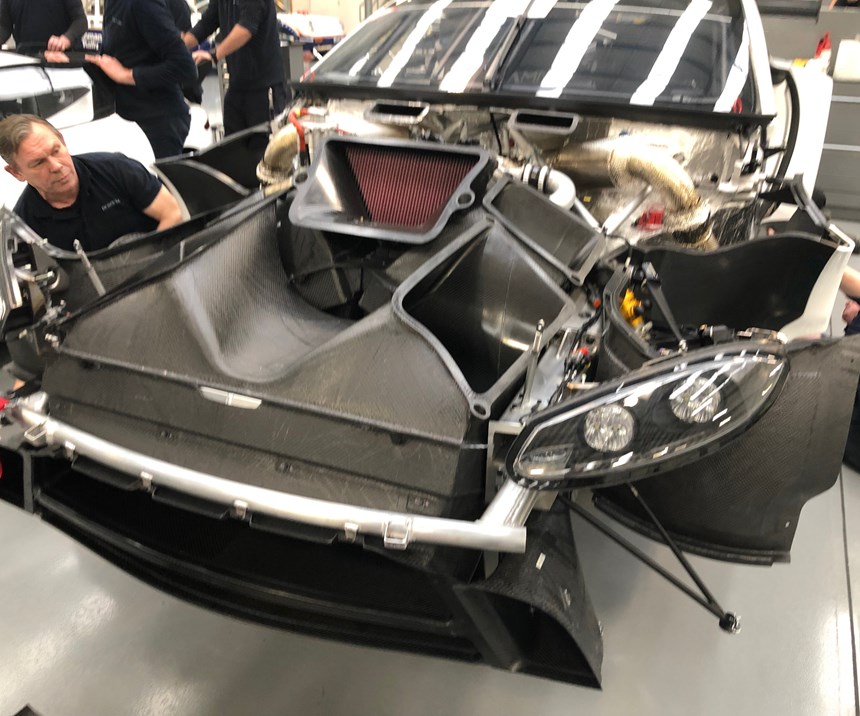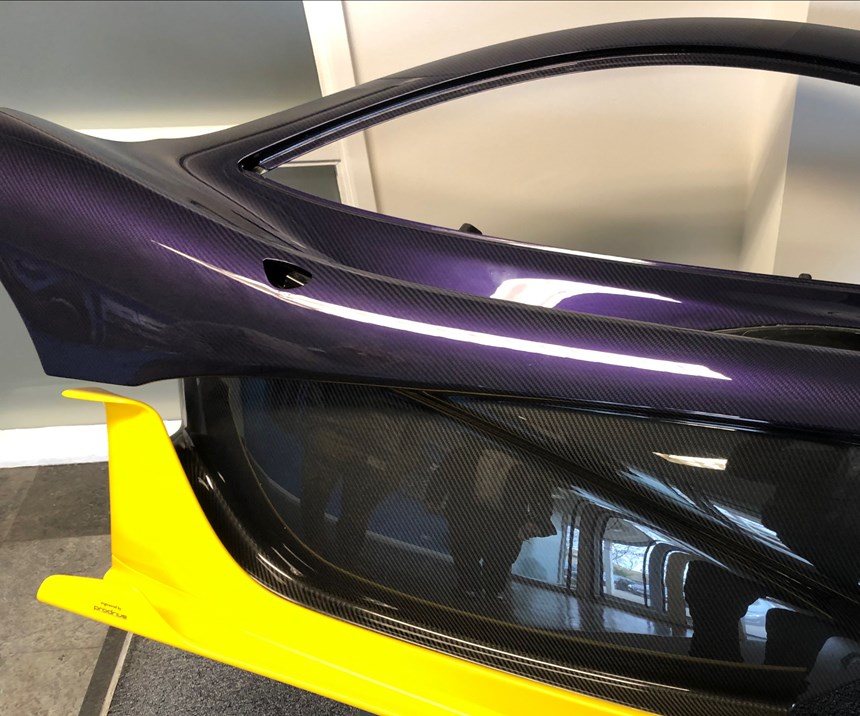Plant Tour: Prodrive
At Prodrive, composite parts for race cars, luxury cars and even folding bicycles receive hands-on attention through every step of manufacture.
When you walk in the front door of Prodrive, you’re greeted by the 2017 first place winner of Le Mans 24 Hours GTE Pro from Aston Martin Racing. Prodrive painstakingly fabricates all of the parts for each of the cars it produces. From engine parts to electrical systems to carbon fiber bonnets and doors, everything on each racing car is bespoke.
Last week I had the privilege of touring the company’s Motorsport & Advanced Technology and Composites facilities in Banbury, U.K. and Milton Keynes, U.K. respectively. The amount of work that goes into every car part at the Motorsport facility is staggering. And the company approaches the composite components for other sectors with that same attention to detail. Whether a part is for a luxury car, an aerospace or defense application, or a carbon fiber bicycle, it receives hands-on attention through every step of its creation.
A great example is the Hummingbird, an amazing light folding bicycle, that the company produces. To see the bike sitting there next to motorsport cars that can pull 4 or 5 Gs in the turns seems like an odd juxtaposition at first. But when you spend some time examining the lightweight elegance of the bike and its folding mechanisms, then you get a good sense of the philosophy that’s at the core of what Prodrive does. (For more about the Hummingbird carbon fiber folding bicycle see Peggy Malnati’s article “Composites-intensive folding bike: Simplifying multi-modal transportation,” which explores the project in detail.)
The hands-on attention each project receives is part of what Prodrive prides itself on. When asked about automation and production rate, chief engineer John McQuilliam explained that the company is always looking to improve efficiencies and has interest in IOT solutions with that regard, but that most of the processes at Prodrive will always be by hand. And while the company uses a lot of tried and true methods — hand layup and vacuum infusion — there’s a lot of innovation happening as well. Earlier this year the company announced a new initiative to advance the use of recycled composite materials.
Prodrive calls the process P2T — short for Primary to Tertiary. The process uses a reactive thermoplastic resin; a plastic monomer is reacted with a catalyst in the presence of recycled fibers to produce a cured laminate. The company says it allows a composite material to be used three or more times, should the part reach end-of-life. (To learn more about Prodrive’s PT2 process read “AMRC and Prodrive partner to advance manufacturing of recyclable composite components.”)
Related Content
-
Plant tour: Albany Engineered Composites, Rochester, N.H., U.S.
Efficient, high-quality, well-controlled composites manufacturing at volume is the mantra for this 3D weaving specialist.
-
From the CW Archives: Airbus A400M cargo door
The inaugural CW From the Archives revisits Sara Black’s 2007 story on out-of-autoclave infusion used to fabricate the massive composite upper cargo door for the Airbus A400M military airlifter.
-
PEEK vs. PEKK vs. PAEK and continuous compression molding
Suppliers of thermoplastics and carbon fiber chime in regarding PEEK vs. PEKK, and now PAEK, as well as in-situ consolidation — the supply chain for thermoplastic tape composites continues to evolve.

.png;width=70;height=70;mode=crop)




















